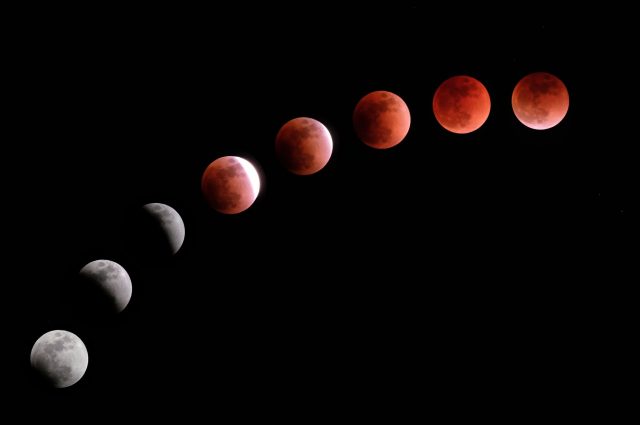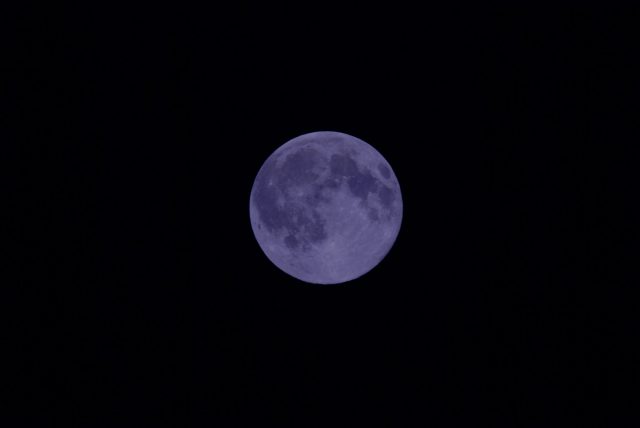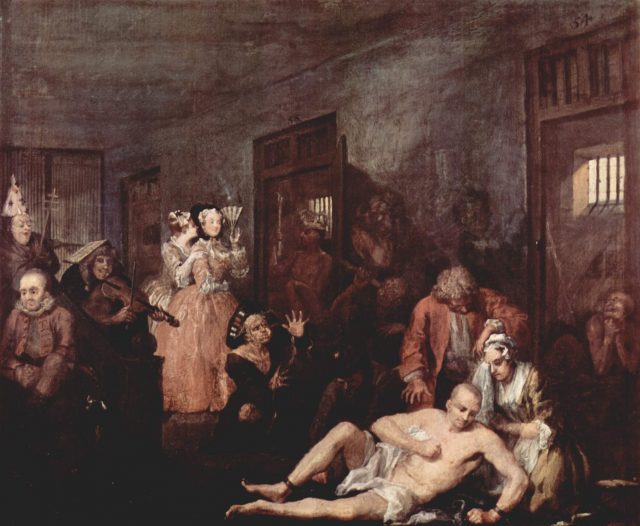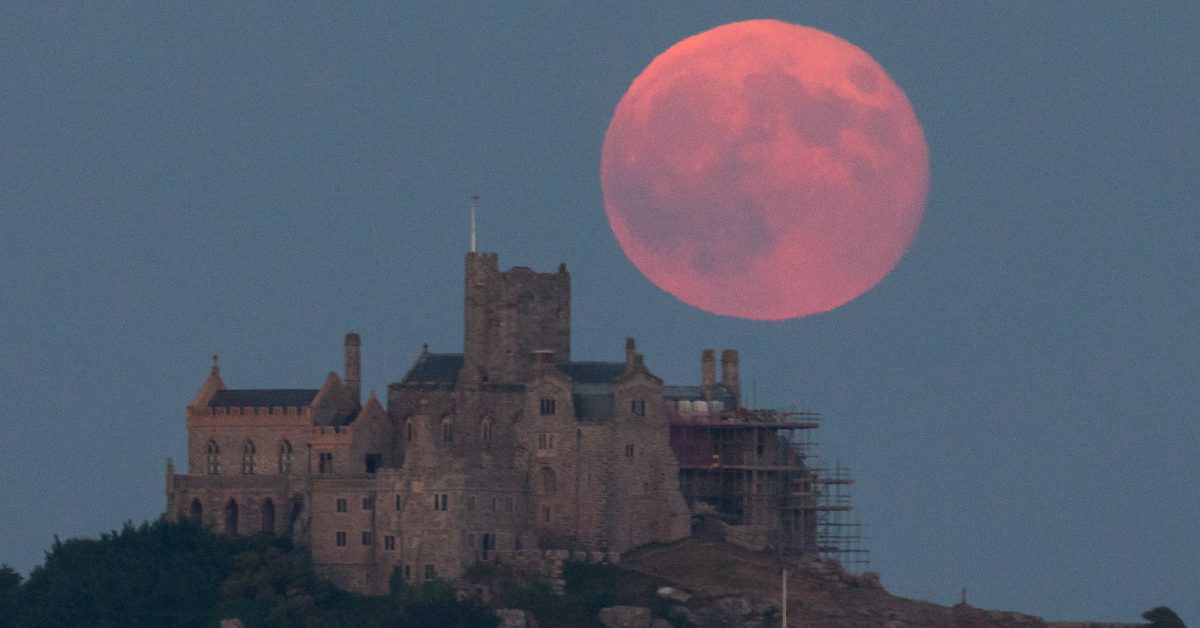The moon is something that most of us see every day and don’t think much about. But there is a wealth of folklore about the moon that dates back centuries, and some of it still informs our ideas today. With a Strawberry Moon on the horizon this month, check out some fantastic lunar facts.
A name for every month
The terms “blue moon” and “supermoon” are relatively commonplace today. But have you ever heard of a Strawberry Moon, a Thunder Moon, or a Beaver Moon?

The full moon that occurs every year in June is not called a Strawberry Moon because of its color, but because of a naming convention created by early Native Americans. The Gregorian and Julian calendars were unknown to these tribes, so instead, they would chart the passage of time by counting the phases of the moon.
Since the names were based on events that happened during that season, the terms weren’t always consistent among tribes. For example, July’s moon is called a Thunder Moon because some areas saw thunderstorms at this time of year. But it has also been referred to as the Full Buck Moon because July is when a buck’s antlers are fully matured. The reason we tend to use one term in preference to another is that the Colonial Americans adopted specific names for their own calendar, ensuring that some names were preserved while others were lost to history.
June’s moon is called a Strawberry Moon because it was the start of the strawberry-picking season, not because the moon is colored pink. It is possible for the moon to have a pink or red hue, but this is a random event that can be caused by pink-hued clouds covering it or a haze in the sky caused by dust or smoke from storms, pollution, or volcanic eruptions.
The full moon in March is known as the Worm Moon because it’s when earthworm casts start to appear and the birds begin foraging for food. It is also known as the Sap Moon, the Crow Moon, and the Lenten Moon. This last name is inspired by the fact that the March full moon is used to fix the date of Easter. Unlike Christmas, which falls on December 25 every year, the date of Easter is determined by the phase of the moon: Easter will fall on the Sunday following the first full moon that occurs after the spring equinox.
Once in a blue moon
If a month ever contains a second full moon, it is known as a blue moon. This inspired the phrase “once in a blue moon,” which refers to something that doesn’t happen very often. The last blue moons occurred on October 31, 2020, and March 31, 2018. The next one is due to occur on August 22, 2021.
So if the term “blue moon” refers not to the moon’s color but to its place in the calendar, what about all those photos showing a glowing moon with a blue hue? Those are created merely by photographing the moon with a blue lens.

The term “supermoon” is used to describe the moon when it’s so close to the Earth that it appears larger than normal. For example, the supermoon in April 2021 was 6% larger than average. This is not a term used by astronomers, who prefer to call such moons a “perigee full moon.” The word “perigee” refers to when the moon’s elliptical orbit brings it close to the Earth. When it’s far away from the Earth, this is known as an “apogee moon” or “micromoon.”
Moon myths
The moon was very important to ancient cultures around the world. As well as affecting tides and delineating seasons, other beliefs sprung up about the moon’s effect on humanity.

The January full moon is sometimes referred to as the Wolf Moon because that was the month when the wolves could be heard howling with hunger. But for many years, people thought that the appearance of the full moon could cause people to turn into werewolves. Of course, modern science has disproved this with the identification of clinical lycanthropy, but the idea still persists in books and movies.
Since the moon can affect tides, the idea came about that it could also affect blood flow within the body. As such, some people plan major operations according to their astrological forecast. But much like the werewolf myth, science has discredited this idea. A study of 18,000 heart-related surgeries taking place between 1993 and 2006 in the Cleveland Clinic showed that none of them were affected by the phases of the moon.
The moon’s effect on our behavior
The word “lunatic” has its roots in the Latin word “Luna,” an ancient Roman moon goddess. Throughout history, there have been plenty of myths that a full moon can bring out crazy behavior in humans and animals.
This was such a strongly held belief that psychiatric patients at Bethlehem Hospital in 18th-century London would be securely restrained in advance of a full moon. In addition, people on trial in England at that time would have a stronger argument for lunacy if their crime occurred under a full moon.

While the idea that kids get hyper at bedtime during a full moon has been discredited (the study merely showed that kids get hyper at bedtime all the time), a Swedish study did find that a full moon can affect the sleep of adults. It takes people five minutes longer to fall asleep under a full moon, and they also wake up 20 minutes sooner.
Studies have shown that there is a slight increase in emergency veterinarian visits during a full moon, lending weight to the theory that the moon can make dogs and cats go a little bit haywire. But it seems more likely that this is an indirect consequence rather than anything mystical.
It’s most likely the extra nighttime illumination a full moon provides encourages more cat and dog adventures that end in fights and injuries. This is similar to the explanation given for why there appears to be more crime on nights when there’s a full moon: more moonlight makes it easier to see.
More from us: Lunar Dust Is More Toxic Than We Previously Thought
Since “supermoon” is a bit of a loose term, there is some debate over whether the Strawberry Moon on June 24 counts as one or not. But if you want to check it out for yourself, the moon will be at its fullest at 11:40 am PT, but will be visible between Wednesday morning and Saturday morning.
